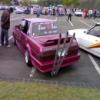M35 Turbo Upgrade.
Announcements
-
Similar Content
-
Latest Posts
-
By Nightmare_mistress_R33 · Posted
Thanks for the update I truly appreciate it. I was trying to figure out the sensors. -
My son recently purchased a 93 Skyline GTS25 (NA), I am hoping to get some insight as to what potential this car has. I have auto mechanical experience, and I am capable of working on this vehicle, but I know nothing about it. Where's the best site to purchase parts (maintenance, repair, upgrades)? What kind of upgrades are available? Thanks again and I look forward to any information that you all have to offer! Darrick
-
By TurboTapin · Posted
This is a pump I have used in the past; no oil ever leaks or gets past the regulator plug.I was trying to understand what caused Nissan to not only mention it in their manuals but to also state it's a replacement part yet the part cannot be found on my pump or on any new pumps and there doesn't seem to have ever been a replacement part#. First time I've noticed something strange like this from NIssan. -
yeah I have brown peeking out from in between some metal sheets close to the hood hinges. Strut towers look fine, even around the edges. some images https://imgur.com/a/brGt3Tu the one that looks the worst is the panel(s) going away right near the firewall on the passenger side, from underneath. Driver side does not look that bad.







Recommended Posts
Create an account or sign in to comment
You need to be a member in order to leave a comment
Create an account
Sign up for a new account in our community. It's easy!
Register a new accountSign in
Already have an account? Sign in here.
Sign In Now